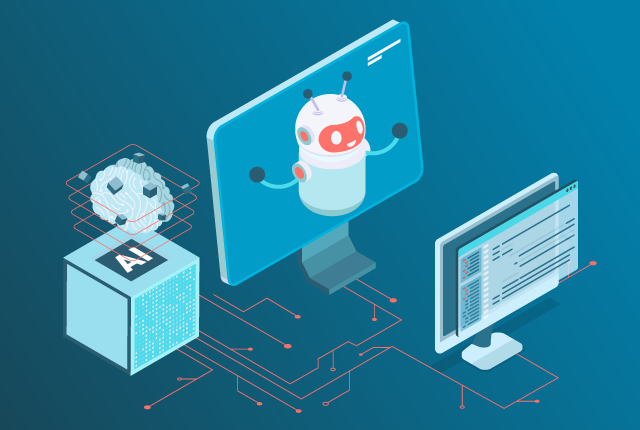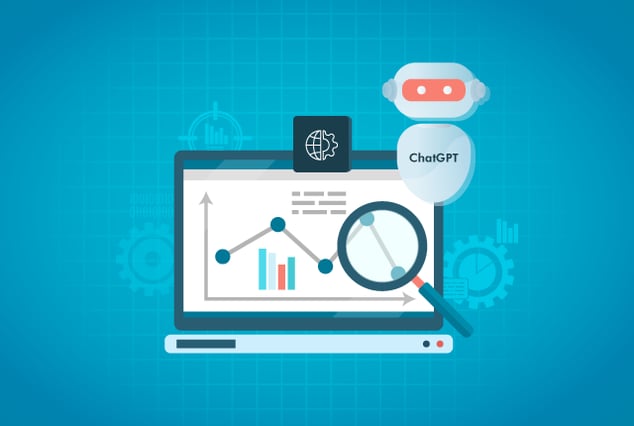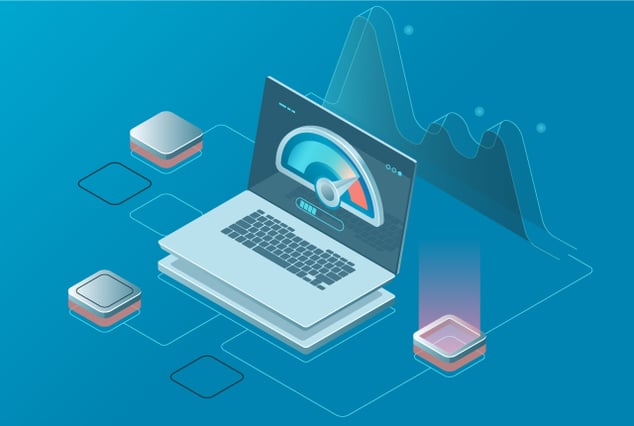
The field of software development is undergoing a transformative shift with the advent of AI tools like ChatGPT. In this blog, we will explore how ChatGPT simplifies coding for several problematic scenarios. We will examine practical coding examples that showcase the difficulties ChatGPT encounters when tackling complex problems. We will offer practical techniques to successfully navigate these obstacles.
Trends and Projections: Advancements in ChatGPT's Coding Capabilities
The continuous evolution of ChatGPT's coding capabilities is a testament to its transformative potential. We analyzed GPT 3.5 vs. GPT 4 and then ran a manual code review. Here are our findings:
| # | Problem Area | % Improvement |
|---|---|---|
|
1
|
Code Coverage (Missed Cases)
|
74
|
|
2
|
Compilation/Execution Errors
|
100
|
|
3
|
Missing Best Practices
|
20
|
|
4
|
Load/Bulk Processing
|
33
|
|
5
|
Logic Building
|
66
|
|
6
|
Exception Handling
|
0
|
|
7
|
Security Issues
|
0
|
|
8
|
Hard Coding
|
62
|
|
9
|
Deprecated Code Implementation
|
100
|
|
10
|
Memory Leaks
|
0
|
|
11
|
Missing Solution Innovation
|
80
|
|
12
|
Lack of Encryption
|
0
|
|
13
|
Lack of Access Control
|
0
|
|
14
|
Performance
|
50
|
|
15
|
SQL Injections
|
0
|
ChatGPT continues to surpass its previous milestones with every new version and demonstrates these trends:
-
Unparalleled Language Understanding
The latest versions demonstrate an exceptional comprehension of programming concepts and syntax. This advancement allows the model to produce precise and contextually appropriate code snippets, decreasing the requirement for extensive manual intervention.
-
Code Completeness
Leveraging advancements in training data and fine-tuning techniques, it sets new benchmarks for generating comprehensive code. It confidently handles increasingly complex coding problems, seamlessly bridging the gap between problem statement and solution.
-
Syntactic Excellence
The latest versions excel at generating code that adheres to specific programming language conventions. Its refined language modeling capabilities ensure syntactic correctness, empowering developers with code snippets that seamlessly integrate into their projects.
-
Proactive Error Detection and Correction
Through continuous research and iterative improvements, ChatGPT emerges as a vigilant coding assistant. It proactively detects common coding mistakes and offers insightful suggestions for error correction, elevating the quality of the code and fostering a culture of excellence.
Challenges Faced by ChatGPT With Complex Coding Problems
While ChatGPT has made significant progress, it encounters challenges when confronted with complex coding problems. Some of the challenges include:
-
Decision-Making Ability
It relies on patterns learned in training data to generate responses and cannot make informed decisions or evaluate multiple approaches.
-
Understanding of Code Execution
Its understanding of code execution is limited to the knowledge available to it during training. Consequently, it may face challenges in accurately predicting the behavior or performance of complex code.
-
Lack of Domain-Specific Knowledge
Its training encompasses a wide range of domains and topics, but it may lack specialized knowledge of specific programming domains or industries. This can limit its ability to generate code tailored to specific requirements or industry-specific best practices.
-
Ethical and Bias Concerns
AI models like ChatGPT can inadvertently reflect biases present in the training data, potentially leading to biased or unfair responses. Addressing ethical concerns and mitigating biases requires ongoing research, collaboration with experts and rigorous evaluation to ensure fairness and inclusivity in the model's behavior.
-
Error Correction and Uncertainty Handling
It may struggle with error detection and correction, especially in complex code scenarios. Additionally, the model may not effectively convey uncertainty when encountering ambiguous or unclear instructions, which can impact the reliability of its responses.
Development teams need to be aware of these limitations and actively address them when working with ChatGPT to ensure accurate and reliable code generation.
Addressing Challenges and Solutions
Several approaches can be considered to overcome these challenges and maximize the effectiveness of ChatGPT in code writing:
-
GPT for GPT
To address the challenges of ambiguity and contextual understanding, providing a clear and well-defined context is crucial. By breaking down complex requirements using ChatGPT to a level that another layer of GPT can process in smaller pieces, it becomes easier to enhance the model's understanding and generate accurate code snippets. This approach allows for a more thorough and precise analysis of the problem at hand.
-
Fine-tuning with Domain-Specific Data
Fine-tuning with domain-specific programming data has shown promising results in improving its performance. By incorporating programming language-specific knowledge and coding patterns, the model gains a deeper understanding of the nuances and intricacies of a particular programming domain. This tailored approach significantly enhances the accuracy and relevance of the code generated.
-
Addressing Ethical and Bias Concerns
OpenAI addresses ethical concerns and biases through several key approaches:
-
Diverse Training Data: Uses a wide range of data from diverse sources to reduce biases and ensure a balanced representation of perspectives.
-
Bias Mitigation Research: Conducts research to develop techniques that detect and mitigate biases in both training data and responses generated by the system.
-
Collaboration with Experts: Collaborates with external experts to gain diverse perspectives and improve the system’s fairness.
-
User Feedback and Iterative Improvement: Encourages user feedback to identify biases and areas for improvement, continuously refining the model.
-
Public Accountability and Transparency: Provides transparency about limitations, shares research and invites scrutiny from the community.
-
External Audits: Explore partnerships for independent audits to identify biases and recommend improvements.
-
Clear Usage Guidelines: OpenAI provides guidelines for reviewers, emphasizing neutrality on controversial topics to minimize biases.
OpenAI's commitment to learning, feedback, and continuous improvement makes strides toward the development of fair, unbiased AI systems aligned with user values.
-
-
Incorporating Error Detection and Correction Mechanisms
Error detection and correction mechanisms that can enhance ChatGPT's problem-solving capabilities include:
-
Static Analysis:Identify syntax errors, variable misuse and type inconsistencies without executing the code.
-
Linting: Detect common coding mistakes and enforce coding conventions, such as unused variables or missing semicolons.
-
Compiler Checks: Verify code correctness during compilation, including type checking and memory error detection.
-
Unit Testing: Generate tests to validate code functionality and identify errors in different scenarios.
-
Code Review: Provide suggestions and feedback on generated code to improve code quality.
-
Machine Learning-Based Error Detection: Training models to identify common coding mistakes and offer suggestions based on patterns from correct code examples.
By incorporating these mechanisms, ChatGPT can assist developers in error identification and rectification, resulting in more accurate and reliable code.
-
-
Involving Human Experts for Review and Validation
Human experts play a crucial role in reviewing and validating the model's responses. By combining the expertise of human programmers with ChatGPT's capabilities, potential errors, performance issues, and security vulnerabilities can be identified and rectified. This collaborative approach ensures the generated code meets the required standards and best practices.
-
Providing Additional Links and Clarification
Explicitly providing additional links or resources while requesting a response from ChatGPT can enhance the model's understanding of the latest tools, frameworks, or coding techniques. These references serve as a bridge between ChatGPT's knowledge cutoff and the most recent advancements in the field. It is important for users to actively provide any missing details or clarifications to ensure accurate and contextually relevant code generation.
Conclusion
ChatGPT has advanced code writing capabilities, but limitations exist for complex coding challenges. QASource, a leading QA and software testing provider, can help overcome these limitations and enhance ChatGPT's capabilities.
Partnering with QASource empowers businesses to effectively leverage ChatGPT's potential in addressing complex coding challenges. Download our comprehensive ChatGPT report to unlock intelligent code generation and drive efficient outcomes in your organization's code-writing processes.

